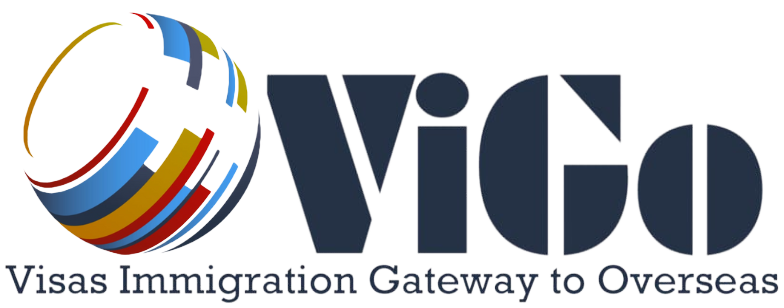- August 17, 2019
- by superadmin
- Marketing
- 0 Comments
Everything You Need to Know About Permanent Resident Visas
Introduction A Permanent Resident (PR) visa is a valuable status for foreign nationals who wish to live, work, or study in a country long-term without being a citizen. Gaining permanent residency allows individuals to enjoy many of the same rights as citizens, including access to public services, healthcare, and sometimes, the ability to apply for citizenship after a certain period. In this blog, we’ll walk you through the essential details about PR visas, how to apply, the benefits they offer, and the challenges you might face.
What is a Permanent Resident Visa?
A Permanent Resident Visa (PR Visa) is a legal status granted to individuals who are not citizens but have been allowed to reside indefinitely in a country. With this visa, individuals are typically allowed to stay in the country for as long as they meet the requirements, such as maintaining employment, staying free of criminal charges, or paying taxes.
The specifics of obtaining PR vary from country to country, but common methods of gaining PR include employment-based applications, family sponsorship, or investment.
How to Apply for a Permanent Resident Visa?
Applying for a PR visa can be complex and lengthy, with each country having its own process. Here’s a general overview of how to apply:
1. Check Eligibility Criteria
Each country has its own eligibility requirements for PR. The most common ones include:
- Work Experience: Certain countries prefer applicants with work experience in specific industries.
- Language Proficiency: Most countries require applicants to prove proficiency in the local language.
- Educational Qualifications: Higher education or specific skills can increase your chances.
- Family Ties: If you have close family members already in the country, this can be an advantage.
- Health and Character Checks: Most countries require medical exams and police clearances.
2. Submit an Expression of Interest (EOI)
In some countries, you need to submit an EOI to indicate your interest in obtaining PR. This typically involves providing personal details, work experience, and education.
3. Receive an Invitation to Apply (ITA)
Once your EOI is considered, you may receive an ITA to apply for PR. Some countries (like Canada) have a point-based system, where you accumulate points based on age, education, work experience, and language skills.
4. Submit the Application
Once invited, you can submit your application, which often includes documents such as:
- Passport and identification documents
- Proof of employment or business ownership
- Proof of language proficiency (English or the local language)
- Educational transcripts
- Health and character certificates
5. Wait for Processing
After submitting your application, you will need to wait for the authorities to process it. This can take several months depending on the country, the complexity of your application, and the demand for PR visas.
6. Attend an Interview (if required)
Some countries may require an interview as part of the PR application process.
7. Receive Your PR Visa
Once your application is approved, you’ll be granted PR status, allowing you to live, work, and study in the country indefinitely.
Countries Offering Permanent Residency
Several countries offer PR programs, and the best one for you depends on your personal situation. Some popular destinations include:
1. Canada
Canada has one of the most well-known PR programs in the world. With a robust point system, the country offers pathways through the Express Entry System (for skilled workers), Family Sponsorship, Provincial Nominee Programs (PNP), and Investor Visas.
- Benefits: Free healthcare, access to education, social benefits, and the ability to apply for Canadian citizenship after three years of residency.
2. Australia
Australia’s PR program is points-based and focuses on skilled workers, family reunion, and humanitarian causes. Applicants may apply through the Skilled Migration Program, Employer Nomination Scheme, or Family Stream.
- Benefits: Access to health benefits, work and study rights, and the ability to apply for Australian citizenship after four years.
3. United States
The U.S. offers permanent residency through the Green Card, which can be obtained via employment, family sponsorship, or the Diversity Visa Lottery.
- Benefits: Work flexibility, access to education, social security, and the path to U.S. citizenship after five years of residency.
4. New Zealand
New Zealand has several pathways to PR, including skilled migrant visas, family-based applications, and investment visas.
- Benefits: Public healthcare, the ability to travel in and out of the country freely, and the opportunity to apply for citizenship after five years of residency.
Benefits of Having a Permanent Resident Visa
- Right to Live Indefinitely: PR allows you to stay in the country for as long as you comply with the residency requirements.
- Work and Study: Most PR holders can work for any employer or study in the country without restrictions.
- Access to Public Services: This includes healthcare, education, and social security benefits.
- Pathway to Citizenship: In many countries, after a certain number of years as a permanent resident, you can apply for citizenship.
- Family Sponsorship: PR holders can often sponsor their family members to join them in the country.
- International Travel: With PR, you can travel in and out of the country freely without needing a visa.
Challenges of Obtaining a Permanent Resident Visa
- Lengthy Process: The PR application process can take years to complete due to long processing times and high demand.
- Strict Eligibility Requirements: Meeting the eligibility criteria can be difficult, especially for countries with strict point-based systems.
- Maintenance of Status: Some countries require PR holders to spend a certain amount of time in the country to maintain their status.
- Complex Documentation: The process often involves a lot of paperwork, including proof of work experience, language proficiency, health exams, and police clearances.
Final Thoughts
Obtaining a Permanent Resident Visa is an exciting opportunity for anyone seeking to build a life in a new country. While the process can be challenging, the long-term benefits of permanent residency—such as the ability to live, work, and study freely, access public services, and eventually apply for citizenship—make it a worthwhile goal.
If you’re considering applying for PR, take the time to research the specific requirements for your chosen destination, gather your documents in advance, and ensure that you meet the necessary qualifications. With patience and careful planning, a PR visa can be your ticket to a successful life abroad.



